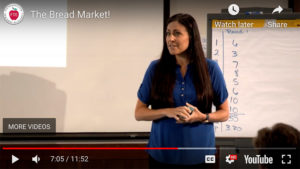
As the spread of COVID-19 causes high schools across the country to close their doors, TFAS is providing resources to help our teachers and parents continue the important task of educating our nation’s future leaders.
View our Economics Lessons of the Week

Through our high school programming division – the Foundation for Teaching Economics (FTE) – TFAS offers a plethora of online lesson plans, readings, handouts, video demonstrations and hands-on activity guides to teach the “economic way of thinking” in engaging and relatable ways.
These resources include:
Economic Reasoning Propositions: The Foundation for Teaching Economics’ Economic Reasoning Propositions (ERPs) are a guide to the “economic way of thinking.” They empower students to view the world through an economic lens and provide a tool kit to solve economic mysteries, understand social phenomenon and make sense of current events.

Lesson Plan Database: This searchable database enables teachers and parents to find lessons and educational activities by topic, Economic Reasoning Propositions (ERPs) and by content standards. All lessons are correlated to the National Voluntary Content Standards in economics, the Common Core, and when possible, to the individual state standards. Our searchable interface facilitates alignment of lesson content and activities for standards- and mastery-based instruction.
Economic Barometer: This series of benchmarks provides an overview of the U.S. federal government’s latest quarterly economic data. Each one is accompanied by its definition and explanation of its composition and use. These benchmarks, especially in combination, are intended to help teachers and students and others readily locate and observe the fundamentals of the evolving national economy.
In the coming days and weeks, we will highlight and promote these lessons with teachers and parents within our network. Please, if you know of a teacher or parent who is educating high school students, share these resources with them as well.
Thank you for helping us continue our important mission through these trying times. We look forward to rising to the occasion and finding new and innovative ways to teach economic reasoning to our rising generations.
Apply for High School Economics Programs
Applications are now open for a number of Summer 2020 FTE programs for high school teachers and students. Please see below for more information and to begin your application today.
We are continuing to closely monitor the spread of COVID-19. The safety of our students, faculty and staff are our first priority. Some FTE programs have been moved to online only. Learn more.

